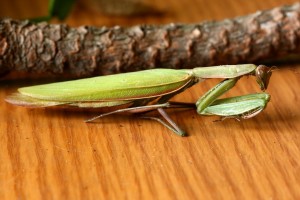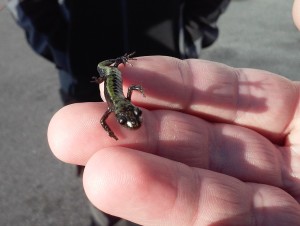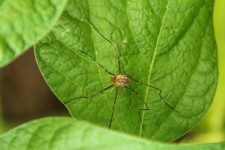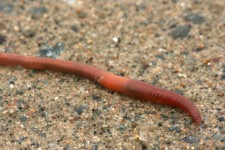Lizards are one of the more well-known animals to regrow their tail after shedding it to evade predators. Last week, I wrote about autotomy (the process of voluntarily shedding a body part) and how it is advantageous at first but can cause hardship afterwards. Certain animals alleviate these hardships by regenerating the lost body part.

Praying mantis are capable of regenerating a lost antenna, mid-leg or hind-leg when young. However, regeneration can go awry and a leg may grow where an antenna was lost.
Why some animals can regenerate body parts and others cannot is still uncertain. If we cut off a finger, it won’t regrow but a salamander can regrow an entire leg. Slugs can even regenerate their head.
Regeneration is found in 90 reptile species, 52 amphibian species, 43 Osteichthyes (bony fish), 45 crustacean species, 45 echinoderms, 43 insect species and 39 arachnids.
Regeneration is described as the partial or complete replacement of a lost appendage with replacement ranging from five to 95 percent of the body part’s original size. Stick insects (order Phasmida) typically regenerate smaller legs.
While a regenerated body part may be better than no body part, the smaller limb or tail can impair foraging, reproduction and survivorship to varying degrees. An animal with a smaller limb will have to forage for smaller prey and trade-off the reduction in nutrients.
Less complex animals, especially those without a spinal cord, can regenerate more body parts than a more complex animal like a human.
If a flatworm (planarian) is split in half, it can regenerate both halves—even the head from the tail piece–if there are enough food reserves within the half.
Earthworms can regenerate a new body only if the vital organs are intact in the one remaining piece.
Crabs, lobsters and crayfish can regenerate limbs. At first the limb is small but during the next molt, the limb begins to approach the original size. Insects also don’t fully regenerate the missing leg or antennae until after several molts.
Typically, insects only regenerate missing body parts when young, such as the praying mantis. Frogs are capable of regenerating limbs and tails only during the tadpole stage. Salamanders are able to regenerate limbs, tails and other tissues throughout their entire life.
Regeneration does have trade-offs. Since nutrients have to be redirected to the growing appendage, the animal may grow slower (especially if it is a juvenile) or it may have fewer nutrients to direct towards reproduction.
The process of regeneration has perplexed scientists for centuries. In 1712, scientists thought small eggs existed underneath a lost limb and once the limb was removed the eggs would recreate the limb.
Recently, scientists discovered that stem cells accumulate at the amputation site in a structure called the blastema to rebuild the appendage.
For flatworms, a single stem cell can give rise to the entire appendage. For tadpole tails and salamander limbs, separate stem cells give rise to each type of tissue such as skin, muscle and bone.
Determining the process of regeneration brought insight into how wounds heals, how blastema form, and cell differentiation and growth.
While humans cannot regenerate an appendage, we are capable of some regeneration. Our skin constantly regenerates and if we cut our finger the wound heals. Someday scientists may figure out how we can regrow an entire finger like a lizard regenerates it’s tail.





I don’t know whether it’s just me or if everybody else encountering problems with your site.
It appears as if some of the text in your posts are
running off the screen. Can someone else please comment and let me know if this is happening to them too?
This may be a problem with my internet browser because I’ve had this happen previously.
Cheers
Its such as you learn my thoughts! You appear to know a lot approximately
this, like you wrote the guide in it or something.
I think that you just can do with a few % to force the message
home a little bit, but instead of that, this is great blog.
A fantastic read. I’ll definitely be back.
This blog was… how do you say it? Relevant!! Finally I’ve found
something which helped me. Thank you!
Good article, thanks.
Good article, thanks.